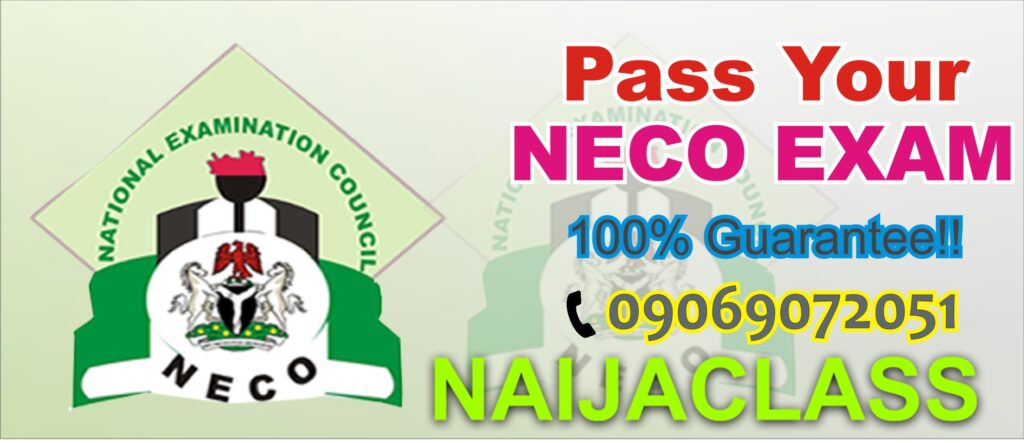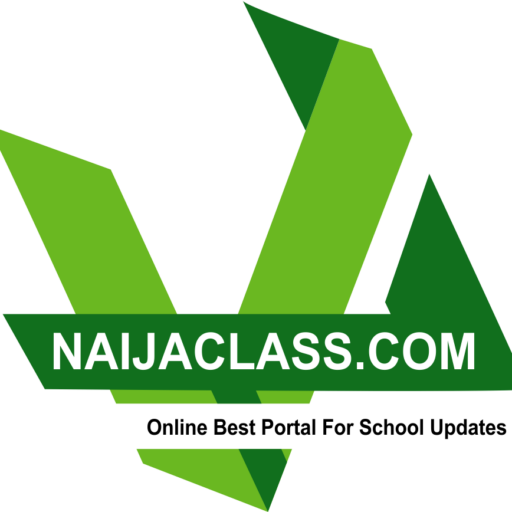Pass Office Practice in Neco 2025 with ease! Get access to the real Neco 2025 Office Practice Expo Questions And Answers before your exam — only from Naijaclass Academy, Nigeria’s No.1 legit exam assistance platform.

Office-Practice-Obj
1DEBCBADEAA
11BCBCCCBCBA
21BEAAEDDBBB
31AAACCEBEBA
41BAADCBAEAD
51BECBCCBADA
==========================
(1)
(PICK ANY SIX)
(i) Good Communication Skills
(ii) Politeness and Courtesy
(iii) Neat Appearance
(iv) Confidence
(v) Multitasking Ability
(vi) Organizational Skills
(vii) Patience
(viii) Computer Literacy
=EXPLANATION=
(PICK ANY FOUR)
(i) Good Communication Skills: A receptionist must speak clearly, listen attentively, and pass information effectively to both visitors and staff. This helps avoid misunderstandings.
(ii) Politeness and Courtesy: A polite receptionist creates a warm and welcoming environment. Courtesy encourages a positive image of the organization.
(iii) Neat Appearance: Receptionists represent the company, so they must look tidy and professional. This creates a good first impression.
(iv) Confidence: Confidence helps the receptionist respond calmly and professionally in any situation, whether answering questions or handling complaints.
(v) Multitasking Ability: Receptionists handle many tasks at once—calls, guests, appointments—so they need to manage all efficiently without confusion.
(vi) Organizational Skills: Being organized helps a receptionist manage records, schedules, and visitor logs smoothly, which keeps the office running efficiently.
==============================
(2a)
An interview is a structured or semi-structured conversation between an interviewer and an interviewee, designed to assess qualifications, gather detailed information, explore opinions, or discuss specific topics in a professional or formal setting.
(2b)
(i) To evaluate a candidate’s skills, experience, and suitability for a job role through direct interaction.
(ii) To collect in-depth information or personal insights for research, journalism, or case studies.
(iii) To address and resolve conflicts, misunderstandings, or performance issues within a team.
(iv) To offer constructive feedback, career guidance, or performance reviews to employees.
(iv) To conduct surveys, market research, or academic studies by engaging directly with participants.
============================
(3a)
A memorandum, often shortened to memo, is a concise written document circulated within an organization to facilitate official communication. It is typically used to share important information, issue instructions, outline policies, or provide updates to employees, departments, or teams in a formal yet internal context.
(3b)
(i) To convey internal announcements, such as changes in company policies or upcoming events, ensuring all staff are informed.
(ii) To assign specific tasks or responsibilities to employees, clarifying expectations and deadlines.
(iii) To document key decisions or discussions from meetings, creating an official record for reference.
(iv) To request additional information, feedback, or clarification from colleagues on ongoing projects or issues.
(v) To serve as a reliable record for future reference, audits, or legal purposes within the organization.
===========================
(4)
(PICK ANY SEVEN)
(i) Aids Decision Making: Information helps individuals and organizations make informed and accurate decisions.
(ii) Improves Communication: It enhances the flow of ideas and understanding between people or departments.
(iii) Increases Productivity: With the right information, tasks can be performed more efficiently and effectively.
(iv) Enhances Knowledge: Information adds to existing knowledge, helping people stay informed and educated.
(v) Facilitates Planning: It provides the necessary data to create effective plans and strategies.
(vi) Promotes Innovation: Access to information encourages creativity and the development of new ideas or products.
(vii) Improves Customer Service: Businesses use information to understand customer needs and deliver better services.
(viii) Supports Problem Solving: Information helps in identifying problems and finding suitable solutions.
(ix) Strengthens Competitive Advantage: Organizations use information to stay ahead of competitors by responding quickly to market changes.
(x) Enhances Record Keeping: It helps in maintaining accurate and up-to-date records for future reference.
==================================
(5a)
(i) Protem Chairman: protem chairman is a temporarily appointed chairperson designated to preside over a meeting when a permanent chairperson has not yet been elected or is unavailable. This role is crucial for maintaining order and facilitating proceedings until a formal leader is established.
(ii) Sine Die: Originating from Latin (“without a day”), sine die refers to the indefinite adjournment of a meeting without setting a specific date for it to reconvene. It is typically employed when all agenda items are resolved or further discussion is postponed indefinitely.
(iii) Vote of No Confidence: A vote of no confidence is a formal resolution passed by a group, such as a legislative body or committee, to declare a lack of faith in a leader or official. If the vote succeeds, it may result in the leader’s resignation or removal, depending on the governing rules.
(iv) In Camera: An in camera meeting is a private session conducted behind closed doors, excluding the public and unauthorized participants. This format is used to discuss sensitive or confidential matters, such as legal issues or personnel decisions, ensuring privacy and security.
(5b)
A.O.B. which simply means “Any Other Business,” is a designated segment in a meeting agenda that allows participants to raise and discuss additional topics or issues not covered in the planned schedule, providing flexibility for unforeseen matters.
===================================
(7a)
Public relations is the deliberate and strategic process of managing communication and relationships between an organization and its various publics, including customers, employees, media, and the community. Its primary goal is to create, sustain, or improve a positive image and reputation through effective messaging, engagement, and reputation management.
(7b)
(i) Building and maintaining a favorable public image by crafting and disseminating positive narratives about the organization.
(ii) Managing crisis communication to address and mitigate negative publicity or emergencies, protecting the organization’s reputation.
(iii) Promoting products, services, or events to stakeholders through targeted campaigns, press releases, or media outreach.
(iv) Fostering strong relationships with media outlets, community groups, and other influencers to enhance credibility and support.
(v) Providing valuable feedback to management by monitoring and analyzing public perception, attitudes, and opinions toward the organization.


FINETRUST